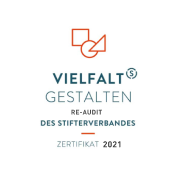Will there be a "Monday after coronavirus"

On the laptop at the kitchen table, company cellphone in hand on the couch, processing files in bed - for two years now, many Germans have been working at home. What began with the first Coronavirus lockdown will soon come pretty much to an end. The current obligation to work at home if you can is based on the Infection Protection Act, which expires on March 20. Many employees will then return to the office. Professor Johanna Bath from the ESB Business School at Reutlingen University conducts teaching and research into the working world of the future. In an interview, she explains what we’ve learned in two years of home office - and what urgently needs to change.
1. Professor Bath, two years of nationwide home office in Germany - top or flop?
I would say - both! It is certainly great that many employers have invested heavily in digitisation. Even before Coronavirus, this was long overdue. Fears that “home office” would lead to a drop in performance have not materialized. Remote work will continue to exist in the future. Unfortunately, what I see as a flop is the still lacking discussion of the question of what work should look like in the medium and long-term future. Many employers are still waiting for the "Monday after Coronavirus," when everything will be "normal" again. But that is not going to happen. There are also some issues in disarray after two years of home office; many employees are overworked, networks have shrunk, and managers find remote leadership stressful in the long run. These issues will need to be addressed in the future.
2. Even before the pandemic, some companies offered the option of working from home - but often with limited time and poor technical equipment. Will that change permanently now?
Yes, I think so. Depending on the study, 70 to 80 per cent of employees would also like to be able to work flexibly from home, at least in part, in the future. Just under half would even be prepared to quit if their employer didn't offer them enough flexibility. In this respect, they are sending a clear signal. And then there are already efforts to anchor this right in a home office law. Employers would do well to address this issue.
3. What must businesses do so that home office works for both sides?
Technically, there was a direct upgrade at the beginning of the pandemic. In many companies, however, that was all the support employees got. This is exactly the time to develop new work models and organizational forms. There are big questions at stake, but operational details also need to be considered. These questions run through all areas of the company, such as human resources, IT and facility management. This is exactly what makes the topic tricky - responsibility is spread over many shoulders and therefore no one feels responsible. That's why I think a new organizational model is a task for CEOs.
4. And what should employees pay attention to?
Employees’ behaviour is contradictory. On the one hand, they want the maximum flexibility offered by remote work. On the other hand, many suffer from suboptimal working conditions, e.g., lack of space or constant distractions caused by the household or family. There is an urgent need for training here. Employees must learn to structure their day better. They must learn to decide when, where, how and with whom they work best for a particular task. Well under 10 per cent of employees in Baden-Württemberg have received training on this to date. There is a need to catch up here.
5. When we talk about the world of work in the future, people are currently talking a lot about mobile work. Is that all we need?
For most organizations, a hybrid working model will be ideal, i.e. a mix of office and remote work and perhaps even other locations. Developing a hybrid work model that functions very well is an important project that needs to be actively designed. Therefore, the management is asked to give guidance, for example, when which employees should be on-site to enable informal talk, relationship building and joint work. If office days are set, then space, time and the necessary infrastructure should also be available on these days so that group work or informal exchange can take place. There have been too few good ideas in this area so far.
6. That sounds like a real change project?
That’s just what it is! But it’s worth it. Many academic studies show that anyone good at establishing a hybrid model is also more successful in overall performance, in employee loyalty, and attractiveness as an employer. Companies can make massive gains here if they take the current situation as an opportunity to plan well.







